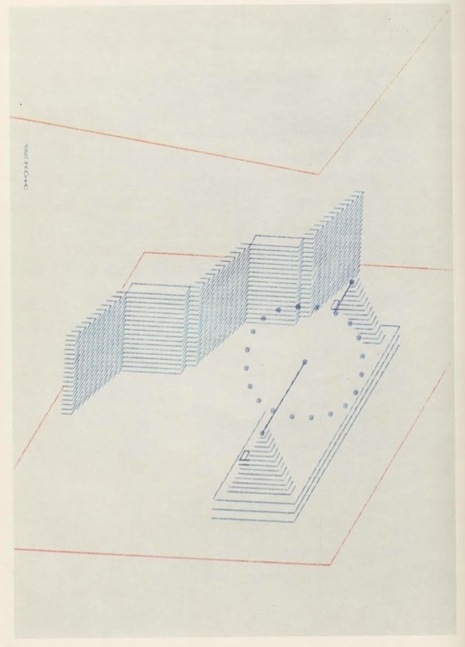
Italic Ode, Dom Sylvester Houédard (U.K., 1971)
In 2014, ASCII art has been a familiar form of pictorial art for at least two decades, whereas typewriters are hardly ever used un-ironically, they have become the vintage terrrain of hipster collectors. But it was not always so. In the late 1960s and early 1970s, at least to judge from Alan Riddell’s fascinating 1975 collection Typewriter Art (available for free download at monoskop.org). In this well-organized and respectful volume, you find out that artists have been tinkering with typewriters in a serious way at least as far back as the 1920s (at least that’s where Riddell starts his narrative). We’ve all seen dada experiments with typography; it was a Bauhaus domain of playful experimentation as well.
Riddell includes a terrific 1878 quotation from Mark Twain, describing his recent acquisition of a “new-fangled writing machine” that had been perfected by Christopher Latham Sholes and put on the market in 1874: “It will print faster than I can write. One may lean back in his chair and work it. It piles an awful stack of words on one page. It don’t muss things or scatter ink blots around. Of course it saves paper.” How many of you out there are “leaning back” while piling “awful stacks” of pixelated words on your screen? Actually, I am doing that right now (leaning back, I mean).
Riddell’s book includes selections from the U.S., the U.K., France, Germany, Italy, Japan, India, Turkey, and many others. The artworks span the 1920s to the 1970s, but in truth an awful lot of them are concentrated in the 1968-1972 period—it appears to have been something of a vogue, sharing at least a little DNA with, say, the Fluxus movement.
I’ll say this: ASCII art this ain’t. (The book does include some portraits of Churchill and Gandhi and a few other personages that are quite similar to ASCII art.) I prefer this stuff, the fact of it having been created by an inky mechanical contraption gives it more charm.

Typestract, Dom Sylvester Houédard (U.K., 1972)

Homage to John Cage, Bengt Emil Johnson (Sweden, 1962)
More after the jump…





